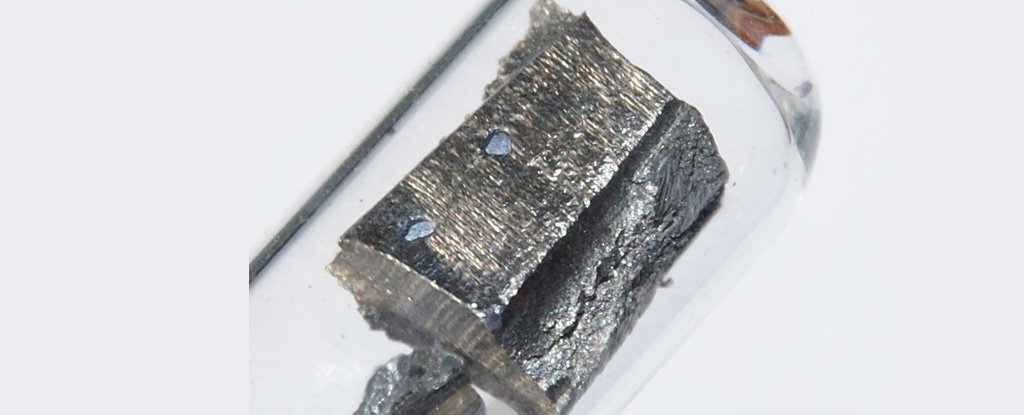Geologists Solve Crucial Mystery Surrounding The Deposits of Rare Earth Elements

A small piece of neodymium. (Images of Elements/CC BY 3.0)
NATURE
PETER DOCKRILL
12 OCTOBER 2020
An international team of scientists has helped to unravel a longstanding mystery about how rare earth element deposits form underground – and sometimes seem to disappear without a trace.
Rare earth elements (REEs) are a set of 17 valuable chemical elements that are incredibly important in manufacturing technological devices, being used as critical raw materials in everything from smartphones to disk drives, wind turbines, satellites, electric vehicles, medical equipment, and more.
Although their name suggests they are rare, they can in fact be relatively abundant resources in Earth's crust; their scattershot dispersion makes them difficult to isolate and extract from under the surface, let alone in environmentally friendly ways.
Because of this, concentrated REE deposits are a highly coveted natural resource, and scientists are continually looking into devising new and better ways of finding and securing the valuable minerals.
In a new study led by geologist Michael Anenburg from Australian National University, researchers wanted to explore the chemical mechanisms by which REEs form under the surface, specifically in and around the igneous carbonatite rock closely associated with the elements.
"These rare rocks and their altered and weathered derivatives provide most of the world's REE," the researchers explain in their new paper.
"No unified model explains all features of carbonatite-associated REE deposits, strongly impairing exploration required to secure future supply."
To investigate the mineralisation processes behind carbonatite-associated REE deposits, Anenburg and his team simulated what happens when carbonatite rock heats up under high pressure, before cooling and depressurising much like it would in natural magmatic processes.
Putting small amounts of synthetic carbonatite into silver or nickel capsules in a piston-cylinder apparatus, the researchers subjected the samples to temperatures of up to 1,200 °C (2,192 °F) at pressures up to 2.5 gigapascals (GPa), before gradually decompressing and cooling them down to 200 °C (392 °F) and 0.2 GPa.
"The aim was to understand what concentrates REE from an entire carbonatite body to a high grade localised deposit," Anenburg explained on his Twitter account.
"So we decided let's put a carbonatite in a capsule and test it ourselves."
Before now, it had been thought that certain ligands – molecules capable of binding to REEs, including chlorine and fluorine – were necessary to make REEs soluble, capable of mobilising the chemicals into crystallised concentrations capable of extraction.
But that's not what the experiment showed. Instead, the results suggest that alkaline chemicals are required for REE transport in and around carbonatites as a precursor for economic-grade mineralisation, with the experiment showing that sodium and potassium helped to render the REEs soluble.
According to the researchers, alkali-bearing carbonatites are capable of forming REE-rich fluids that can migrate long distances in magmatic-like conditions, while retaining high REE solubilities.
Of course, just because we've seen this in lab conditions, doesn't necessarily mean we'd observe the same exact reactions in the open systems of nature, in which the presence of water and all other sorts of chemicals in the environment could change things.
Still, it's a step forward, and one that overhauls our knowledge on the background processes involved in REE formation and concentration.
"This is an elegant solution that helps us understand better where 'heavy' rare earths like dysprosium and 'light' rare earths like neodymium may be concentrated in and around carbonatite intrusions," explains senior author and geologist Frances Wall from the University of Exeter in the UK.
"We were always looking for evidence of chloride-bearing solutions but failing to find it. These results give us new ideas."
The findings are reported in Science Advances.
No comments:
Post a Comment